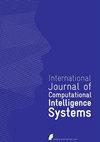Analysis and Evaluation of Feature Selection and Feature Extraction Methods
IF 2.9
4区 计算机科学
International Journal of Computational Intelligence Systems
Pub Date : 2023-09-20
DOI:10.1007/s44196-023-00319-1
引用次数: 1
Abstract
Abstract Hand gestures are widely used in human-to-human and human-to-machine communication. Therefore, hand gesture recognition is a topic of great interest. Hand gesture recognition is closely related to pattern recognition, where overfitting can occur when there are many predictors relative to the size of the training set. Therefore, it is necessary to reduce the dimensionality of the feature vectors through feature selection techniques. In addition, the need for portability in hand gesture recognition systems limits the use of deep learning algorithms. In this sense, a study of feature selection and extraction methods is proposed for the use of traditional machine learning algorithms. The feature selection methods analyzed are: maximum relevance and minimum redundancy (MRMR), Sequential, neighbor component analysis without parameters (NCAsp), neighbor component analysis with parameters (NCAp), Relief-F, and decision tree (DT). We also analyze the behavior of feature selection methods using classification and recognition accuracy and processing time. Feature selection methods were fed through seventeen feature extraction functions, which return a score proportional to its importance. The functions are then ranked according to their scores and fed to machine learning algorithms such as Artificial Neural Networks (ANN), Support Vector Machine (SVM), K-Nearest Neighbor (KNN), and Decision Tree (DT). This work demonstrates that all feature selection methods evaluated on ANN provide better accuracy. In addition, the combination and number of feature extraction functions influence the accuracy and processing time.特征选择和特征提取方法的分析与评价
手势在人机交流和人机交流中有着广泛的应用。因此,手势识别是人们非常感兴趣的一个话题。手势识别与模式识别密切相关,当相对于训练集的大小有许多预测因子时,会发生过拟合。因此,有必要通过特征选择技术降低特征向量的维数。此外,手势识别系统对便携性的需求限制了深度学习算法的使用。从这个意义上说,我们提出了对传统机器学习算法的特征选择和提取方法的研究。所分析的特征选择方法有:最大相关最小冗余(MRMR)、无参数相邻分量分析(NCAsp)、带参数相邻分量分析(NCAp)、Relief-F和决策树(DT)。我们还分析了特征选择方法在分类识别精度和处理时间方面的行为。特征选择方法通过17个特征提取函数提供,这些函数返回与其重要性成正比的分数。然后根据它们的分数对函数进行排名,并将其输入机器学习算法,如人工神经网络(ANN)、支持向量机(SVM)、k近邻(KNN)和决策树(DT)。这项工作表明,所有在人工神经网络上评估的特征选择方法都提供了更好的准确性。此外,特征提取函数的组合和数量也会影响提取的精度和处理时间。
本文章由计算机程序翻译,如有差异,请以英文原文为准。
求助全文
约1分钟内获得全文
求助全文
来源期刊

International Journal of Computational Intelligence Systems
工程技术-计算机:跨学科应用
自引率
3.40%
发文量
94
期刊介绍:
The International Journal of Computational Intelligence Systems publishes original research on all aspects of applied computational intelligence, especially targeting papers demonstrating the use of techniques and methods originating from computational intelligence theory. The core theories of computational intelligence are fuzzy logic, neural networks, evolutionary computation and probabilistic reasoning. The journal publishes only articles related to the use of computational intelligence and broadly covers the following topics:
-Autonomous reasoning-
Bio-informatics-
Cloud computing-
Condition monitoring-
Data science-
Data mining-
Data visualization-
Decision support systems-
Fault diagnosis-
Intelligent information retrieval-
Human-machine interaction and interfaces-
Image processing-
Internet and networks-
Noise analysis-
Pattern recognition-
Prediction systems-
Power (nuclear) safety systems-
Process and system control-
Real-time systems-
Risk analysis and safety-related issues-
Robotics-
Signal and image processing-
IoT and smart environments-
Systems integration-
System control-
System modelling and optimization-
Telecommunications-
Time series prediction-
Warning systems-
Virtual reality-
Web intelligence-
Deep learning
 求助内容:
求助内容: 应助结果提醒方式:
应助结果提醒方式:


